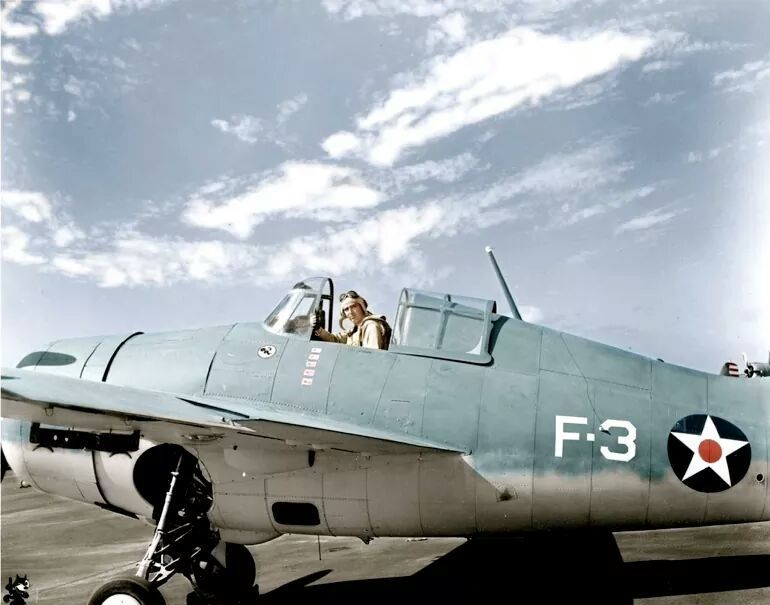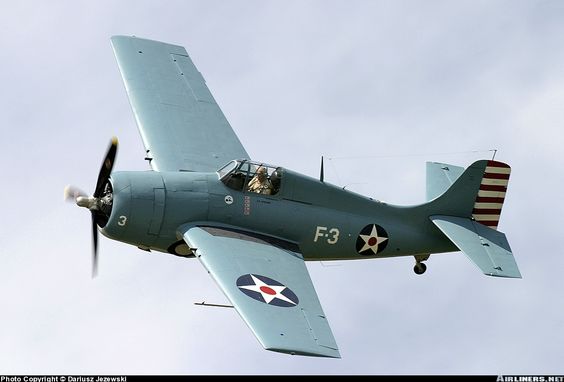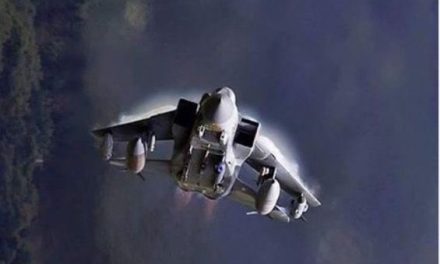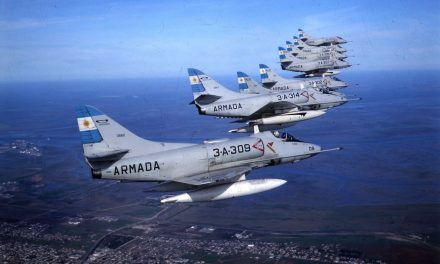“Edward Henry O’Hare was born at St. Louis, Missouri, United States of America, 13 March 1941. He was one of three children of Edward Joseph O’Hare and Selma Anna Lauth O’Hare. He attended the Western Military Academy, Alton, Illinois, along with his friend, Paul Warfield Tibbetts (who would later command the Army Air Forces’ 509th Composite Group, and fly the B-29 Superfortress, Enola Gay). O’Hare graduated in 1932.”
1. Lieutenant “Butch” O’Hare in the cockpit of his Grumman F4F-3 Wildcat fighter. The “Felix the Cat” insignia represents Fighter Squadron 3 (VF-3). The five flags, the ensign of the Imperial Japanese Navy, signify the enemy airplanes destroyed in the action of 20 February 1942. (LIFE Magazine)
Photo 1: http://www.thisdayinaviation.com/20-february-1942/screen-shot-2016-02-19-at-15-25-54/
2. Lt. Edward H. “Butch” O’Hare in his Grumman F4F-3 Wildcat giving a thumbs up at the Naval Air Station Kaneohe, Oahu, Hawaii.
Photo2: https://www.pinterest.com/pin/460985711851704347/
3. A replica
Photo3: https://dzbc.org/f4f-wildcat-wallpaper.html?lang=nl
” ‘For conspicuous gallantry and intrepidity in aerial combat, at grave risk of his life above and beyond the call of duty, as section leader and pilot of Fighting Squadron 3, when on February 20, 1942, having lost the assistance of his teammates, he interposed his plane between his ship and an advancing enemy formation of nine attacking twin-engined heavy bombers. Without hesitation, alone and unaided he repeatedly attacked this enemy formation at close range in the face of their intense combined machine-gun and cannon fire, and despite this concentrated opposition, he, by his gallant and courageous action, his extremely skillful marksmanship, making the most of every shot of his limited amount of ammunition, shot down five enemy bombers and severely damaged a sixth before they reached the bomb release point.
” ‘As a result of his gallant action, one of the most daring, if not the most daring single action in the history of combat aviation, he undoubtedly saved his carrier from serious damage.’ “
—Franklin Delano Roosevelt, Thirty-third President of the United States, his remarks on the presentation of the Medal of Honor, 21 April 1942, at the White House, Washington, D.C. The American Presidency Project








Recent Comments